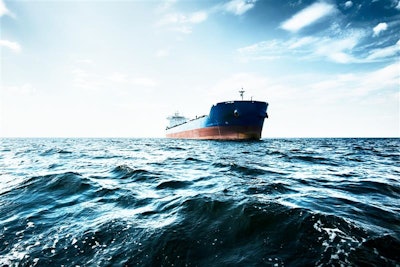
As the EVER GIVEN ran aground in the Suez Canal, each day it blocked the waterway cost global trade over $10 billion. The impacts on the global supply chain were quickly felt by consumers, with delays in delivery for well-known brands as well as market concerns about the delivery of oil and other commodities to many countries.
It seems like such an event was inevitable, yet the global markets were very underprepared, much like the Coronavirus disease (COVID-19) pandemic. Hundreds of cargo ships were left with uncertainty about their ongoing passage, with very lengthened delivery times and increased costs as a result.
In addition, there were pre-existing delays to goods that were already waiting to be loaded and in a freight climate experiencing a shortage of containers due to supply chain disruptions arising from the COVID-19 pandemic. All this compounded a severe problem that is already causing huge friction in the commodities supply chain.
Trading agricultural commodities, such as natural rubber, is still a very opaque market, and in many cases, based on traditional paper methods. There are delays and inefficiencies in almost all stages of the value chain, all the way from producers to processors, traders and brokers through to consumers. This leads to innately greater pricing risks and volatility, thereby exposing areas to innovate improved operational efficiencies across the supply chain, to unlock more opportunities for all market participants. More open access to trade finance and insurance, coupled with more choice in appropriate trading contracts and futures, will cover the inherent risks of the transportation of agricultural commodities. This can all be addressed through the better use of technologies, combined with expert sector understanding to ensure that all market areas are covered, and all known data points included. For example, digital transformation can support the way trade finance deals are financed and structured, to take account of such inherent risks of freight, especially transporting commodity products.
Technology to drive efficiency in the commodities supply chain
Technology is chronically under-used in the agricultural commodities industry and will eventually come to the fore. Boston Consulting Group has indicated that there is $70 billion to be gained in incremental value from commodities trading deploying appropriate technologies. In addition, the COVID-19 pandemic has created a further impetus for change, with new remote digital working environments illustrating the potential efficiencies for more traditional companies. Finally, the increased global proliferation of Internet connectivity is reaching rural areas where agricultural commodities, such as natural rubber, are grown. This is making digital connectivity and its overlaying benefits a reality for many more market participants.
Better access to information and more advanced deal structures
One of the key benefits for all market participants utilizing digital technology is the power to make the best decisions, through accessing the relevant information, at the right time and in the right way. Another benefit is the access to vast data and information being used to contemplate how deals can be structured so that benefits can flow to all market participants. For example, to hedge against volatile market pricing or to structure revenue share schemes to protect producers’ revenues. Digital technology and platforms provide the ideal environment for these activities to occur, particularly with the inherent risks involved with commodities transportation, as highlighted by the Suez Canal blockage.
Operational efficiencies to improve margins for all-sized businesses
Digitalization is important to eradicate concerns of fraudulence based on paper CAD systems and to speed up these processes. Moreover, secure cloud-based solutions can provide anytime, anywhere access for all-sized organizations. Utilizing modern technology will enable instant pricing, trade execution, real-time information exchange, dynamic risk management and seamless post-trade processing.
The investment required in technology by smaller businesses has historically been a barrier to adopting digital technologies within the agricultural commodities industry. However, with more independent, collaborative platforms available today, this is no longer a concern. Smaller businesses can now participate with no upfront costs in pay-as-you-go models to raise their profile and take advantage of smart logistics and supporting services, such as automated contracts, financing and marketing to reach international markets.
Matching the appropriate organization to the appropriate opportunity - as a personalized outcome - for all-sized businesses is now possible. This provides support to the agricultural commodities industry to overcome its most recent downturn and focus more on sustainability goals.
Technology is the future for agricultural commodities
Using technology can increase margins and enhance innovation, supporting the natural rubber industry in its recovery and sustain it into its next period of growth. It allows information to be used more effectively, in real-time, removing frictions within the supply chain, driving better decision making and better outcomes for all and ensuring there are better discovery and contract-pricing systems in place.












